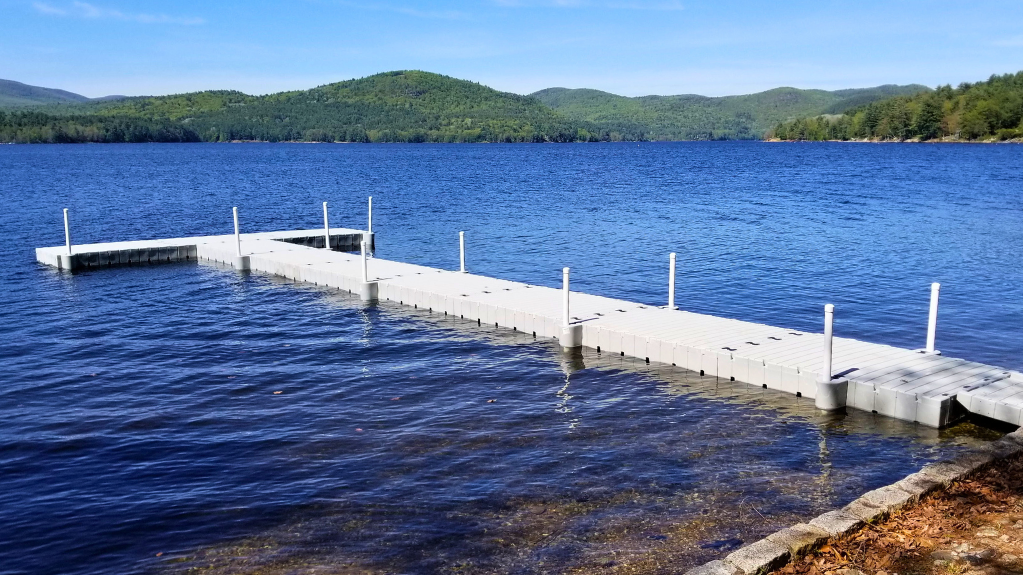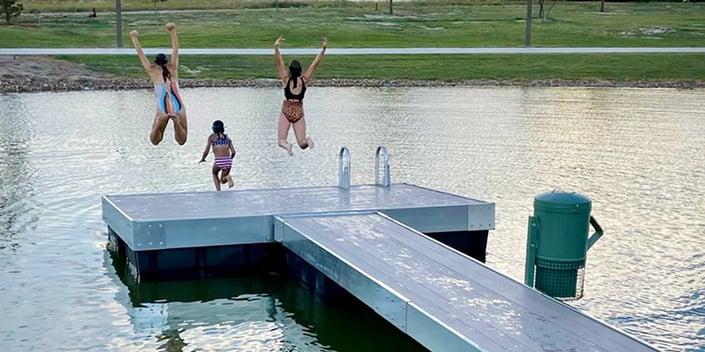Crafting Custom Solutions: Why a Floating Dock Builder is Important for Special Requirements
Crafting Custom Solutions: Why a Floating Dock Builder is Important for Special Requirements
Blog Article
Upgrade Your Beachfront With Long Lasting Floating Docks
Upgrading your beachfront with durable floating docks can dramatically boost both functionality and visual appeals, giving a functional solution for different water tasks. With a range of materials available, including low-maintenance choices and conventional timber, selecting the right dock can match your individual design and fulfill sensible demands.
Benefits of Floating Docks
Floating docks deal a multitude of benefits that enhance their allure for various maritime applications. Among the key advantages is their flexibility to transforming water degrees - floating dock services. Unlike traditional fixed docks, floating docks rise and autumn with the tide, making sure consistent access for boats and watercraft no matter environmental conditions. This attribute considerably lowers the threat of damage to vessels, as they remain safely moored also throughout fluctuations in water deepness.
Furthermore, floating docks are less complicated to install and move, giving adaptability for short-lived or seasonal usage. Their modular layout permits customization to fit specific demands, whether for personal marinas, household beachfronts, or commercial applications.
Furthermore, floating docks develop marginal disturbance to the aquatic setting, preserving neighborhood ecosystems and decreasing the possibility of disintegration. They additionally give enhanced safety and security and security for individuals, as their resilient nature supplies a more forgiving surface area than stiff structures.
Furthermore, floating docks can assist in a varied variety of tasks, such as angling, swimming, and entertainment boating, making them a beneficial asset for beachfront growth. Their versatility and practicality make floating docks a recommended selection for a variety of naval projects.
Picking the Right Materials
Picking suitable products for floating docks is vital to their durability, performance, and general efficiency. When selecting materials, think about factors such as ecological exposure, upkeep needs, and structural honesty. Common products consist of wood, plastic, aluminum, and composite options, each offering distinctive benefits and drawbacks.
Timber, while aesthetically pleasing, calls for regular maintenance to stop rot and degeneration. Pressure-treated timber can boost longevity, yet it might still catch water damages gradually. Plastic floats, frequently made from high-density polyethylene, are immune to deterioration and need marginal upkeep, making them an appealing option for low-maintenance applications.
Light weight aluminum is another practical alternative, recognized for its toughness and light-weight buildings. It is resistant to corrosion and can endure rough weather, although it may be much more pricey than various other materials. Compound products integrate the best features of wood and plastic, providing a low-maintenance and resilient choice that resembles the look of timber without the associated drawbacks.
Inevitably, the selection of material need to straighten with the intended usage, environmental factors to consider, and spending plan restraints, making certain a sturdy and practical floating dock that meets your certain requirements.
Setup Refine Summary
The successful setup of a floating dock depends on mindful planning and execution, ensuring that it runs efficiently in its designated setting. The primary step entails assessing site problems, including water depth, shoreline attributes, and prevailing weather patterns, which will certainly inform the dock design and anchoring system.
Adhering to the site assessment, the next phase is to prepare the floating dock elements. This consists of constructing the framework, safeguarding floats, and attaching any kind of required equipment. It is essential to make certain Visit Your URL that all connections are waterproof and durable to stand up to aquatic problems.
Once the dock is set up, the installment process begins with positioning the dock in the water. This can include a crane or various other training equipment, specifically for larger structures. Proper positioning is crucial for performance and safety.

Maintenance Tips for Long Life
Normal maintenance is crucial for ensuring the durability and optimum performance of a floating dock. To accomplish this, start with regular inspections at least twice a year, focusing on the stability of the dock's framework, including the flotation gadgets and attaching equipment. Search for indicators of wear, damages, or deterioration, and address any concerns immediately to stop further degeneration.
Cleaning up is an additional important element of upkeep. Eliminate particles, algae, and barnacles from the dock's surface area to protect against slippery problems and preserve visual allure. Utilize a soft brush and a light detergent to prevent harming the dock's products.
Additionally, make sure that the dock is properly anchored and secured to wikipedia reference endure seasonal adjustments in water levels and weather. Check the anchoring system for security and make adjustments as necessary.
Enhancing Your Outdoor Aesthetic
To produce a visually enticing exterior area, integrating a floating dock can dramatically enhance the overall aesthetic of your beachfront home. Floating docks are not only go useful but can likewise function as a striking centerpiece that complements the natural environments - floating dock company. Readily available in numerous products and styles, these docks can be customized to match your building's architectural style and landscape
The enhancement of decorative aspects, such as integrated illumination or fashionable railings, additionally raises the dock's aesthetic allure. Take into consideration utilizing natural timber surfaces, which blend flawlessly with the environment, or opting for contemporary products like aluminum or composite outdoor decking that provide a sleek, contemporary look.
Strategically placing planters or seating areas on or around the dock can produce welcoming areas that motivate leisure and satisfaction of waterfront sights. In addition, integrating colors and appearances that integrate with your landscape will certainly develop a cohesive visual throughout your exterior location.

Final Thought

Updating your waterfront with sturdy floating docks can significantly boost both performance and appearances, offering a versatile service for different water tasks. Unlike typical set docks, floating docks surge and fall with the tide, making certain consistent ease of access for watercrafts and watercraft no matter of ecological conditions.Choosing appropriate products for floating docks is crucial to their long life, efficiency, and overall effectiveness.When the dock is assembled, the installation procedure starts with placing the dock in the water.In recap, floating docks offer various advantages, consisting of versatility to water level modifications and a selection of product choices.
Report this page